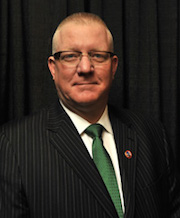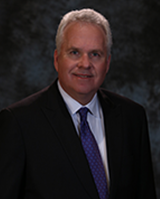McGarvey: Ensure multiemployer pension plan security
Two major construction industry leaders believe now is the time to safeguard multiemployer pension plans.In op-ed article written by Sean McGarvey, President of North America’s Building Trades Unions (NABTU), and Stephen Sandherr, Chief Executive Officer of the Associated General Contractors (AGC), and published in “The Hill,” they urge Congress to fix the financially struggling multiemployer pension model. A multiemployer pension plan is an employee benefit plan maintained under one or more collective bargaining agreements (CBAs) to which more than one employer contributes. The CBAs typically involve one or more local unions that are part of the same national or international labor union and more than one employer. These plans allow employers of all sizes to pool their resources in order to provide for their retired employees.Multiemployer pensions are burdened by outdated rules and regulations, which have kept them from modernizing to keep pace with changes in the economy. This has led to a number of multiemployer funds struggling to remain solvent, threatening the retirement of thousands of hardworking Americans.An attempt was made to allow struggling plans to restructure, but millions of workers face potential cuts in their pension benefits in order to save the funds from projected bankruptcy.The NABTU and AGC are part of a coalition of business owners and unions calling on Congress to create a tool to safeguard multiemployer pension plans for the future. They believe congress should authorize the use of composite plans, which modernize traditional multiemployer plans by combining key features of defined benefit and defined contribution plans.
A multiemployer pension plan is an employee benefit plan maintained under one or more collective bargaining agreements (CBAs) to which more than one employer contributes. The CBAs typically involve one or more local unions that are part of the same national or international labor union and more than one employer. These plans allow employers of all sizes to pool their resources in order to provide for their retired employees.Multiemployer pensions are burdened by outdated rules and regulations, which have kept them from modernizing to keep pace with changes in the economy. This has led to a number of multiemployer funds struggling to remain solvent, threatening the retirement of thousands of hardworking Americans.An attempt was made to allow struggling plans to restructure, but millions of workers face potential cuts in their pension benefits in order to save the funds from projected bankruptcy.The NABTU and AGC are part of a coalition of business owners and unions calling on Congress to create a tool to safeguard multiemployer pension plans for the future. They believe congress should authorize the use of composite plans, which modernize traditional multiemployer plans by combining key features of defined benefit and defined contribution plans. Managed by the private sector, composite plans are not meant to replace healthy defined benefit plans. Instead, they are an alternative to the 401(k)/defined contribution plans, which are increasingly utilized when an employer cannot assume financial responsibilities of a defined benefit plan.McGarvey and Sandherr wrote that participating pension plans would be required to maintain 120 percent funding levels, in order to create a “rainy day fund” for when there is an economic downturn. Plans failing to meet this target would face corrective action, which would be decided by a board of trustees consisting of an equal number of employee and employer representation.According to the article, these plans have been implemented in Canada and have rarely needed to adjust benefits. Furthermore, extensive stress testing was performed on composite plans and revealed they are flexible enough to weather a significant financial crisis such as the Great Recession, while not causing serious financial harm to workers or employers.Employers and workers, they said, need a more sustainable and secure retirement plan, with modern tools to allow employees and employers to effectively and responsibly manage their pensions.“These Americans deserve peace of mind, knowing the plans they worked so hard for will be there for them in their retirement,” wrote McGarvey and Sandherr.
Managed by the private sector, composite plans are not meant to replace healthy defined benefit plans. Instead, they are an alternative to the 401(k)/defined contribution plans, which are increasingly utilized when an employer cannot assume financial responsibilities of a defined benefit plan.McGarvey and Sandherr wrote that participating pension plans would be required to maintain 120 percent funding levels, in order to create a “rainy day fund” for when there is an economic downturn. Plans failing to meet this target would face corrective action, which would be decided by a board of trustees consisting of an equal number of employee and employer representation.According to the article, these plans have been implemented in Canada and have rarely needed to adjust benefits. Furthermore, extensive stress testing was performed on composite plans and revealed they are flexible enough to weather a significant financial crisis such as the Great Recession, while not causing serious financial harm to workers or employers.Employers and workers, they said, need a more sustainable and secure retirement plan, with modern tools to allow employees and employers to effectively and responsibly manage their pensions.“These Americans deserve peace of mind, knowing the plans they worked so hard for will be there for them in their retirement,” wrote McGarvey and Sandherr.
